Refine search
Actions for selected content:
48287 results in Computer Science
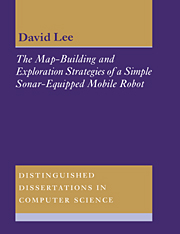
The Map-Building and Exploration Strategies of a Simple Sonar-Equipped Mobile Robot
- An Experimental, Quantitative Evaluation
-
- Published online:
- 05 March 2012
- Print publication:
- 26 July 1996
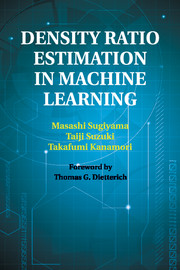
Density Ratio Estimation in Machine Learning
-
- Published online:
- 05 March 2012
- Print publication:
- 20 February 2012
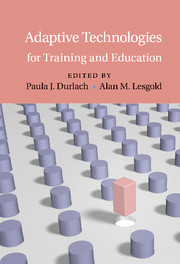
Adaptive Technologies for Training and Education
-
- Published online:
- 05 March 2012
- Print publication:
- 20 February 2012
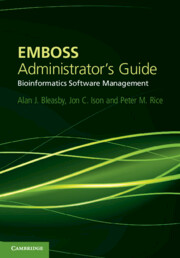
EMBOSS Administrator's Guide
- Bioinformatics Software Management
-
- Published online:
- 05 March 2012
- Print publication:
- 16 June 2011
NORMAL DERIVABILITY IN CLASSICAL NATURAL DEDUCTION
-
- Journal:
- The Review of Symbolic Logic / Volume 5 / Issue 2 / June 2012
- Published online by Cambridge University Press:
- 05 March 2012, pp. 205-211
- Print publication:
- June 2012
-
- Article
- Export citation
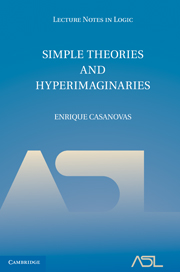
Simple Theories and Hyperimaginaries
-
- Published online:
- 05 March 2012
- Print publication:
- 30 June 2011
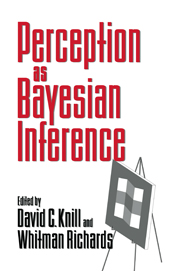
Perception as Bayesian Inference
-
- Published online:
- 05 March 2012
- Print publication:
- 13 September 1996
Equivalences and Congruences on Infinite Conway Games∗
-
- Journal:
- RAIRO - Theoretical Informatics and Applications / Volume 46 / Issue 2 / April 2012
- Published online by Cambridge University Press:
- 02 March 2012, pp. 231-259
- Print publication:
- April 2012
-
- Article
- Export citation
The Density Turán Problem
-
- Journal:
- Combinatorics, Probability and Computing / Volume 21 / Issue 4 / July 2012
- Published online by Cambridge University Press:
- 29 February 2012, pp. 531-553
-
- Article
- Export citation
A compiled implementation of normalisation by evaluation*
- Part of
-
- Journal:
- Journal of Functional Programming / Volume 22 / Issue 1 / January 2012
- Published online by Cambridge University Press:
- 29 February 2012, pp. 9-30
-
- Article
-
- You have access
- Export citation
Preface to special issue: EXPRESS, ICE and SOS 2009
-
- Journal:
- Mathematical Structures in Computer Science / Volume 22 / Issue 2 / April 2012
- Published online by Cambridge University Press:
- 28 February 2012, pp. 123-124
-
- Article
-
- You have access
- Export citation
MSC volume 22 issue 2 Cover and Front matter
-
- Journal:
- Mathematical Structures in Computer Science / Volume 22 / Issue 2 / April 2012
- Published online by Cambridge University Press:
- 28 February 2012, pp. f1-f2
-
- Article
-
- You have access
- Export citation
A hierarchy of reverse bisimulations on stable configuration structures
-
- Journal:
- Mathematical Structures in Computer Science / Volume 22 / Issue 2 / April 2012
- Published online by Cambridge University Press:
- 28 February 2012, pp. 333-372
-
- Article
- Export citation
Almost linear Büchi automata
-
- Journal:
- Mathematical Structures in Computer Science / Volume 22 / Issue 2 / April 2012
- Published online by Cambridge University Press:
- 28 February 2012, pp. 203-235
-
- Article
- Export citation
Proving the validity of equations in GSOS languages using rule-matching bisimilarity
-
- Journal:
- Mathematical Structures in Computer Science / Volume 22 / Issue 2 / April 2012
- Published online by Cambridge University Press:
- 28 February 2012, pp. 291-331
-
- Article
- Export citation
Characteristic formulae for fixed-point semantics: a general framework
-
- Journal:
- Mathematical Structures in Computer Science / Volume 22 / Issue 2 / April 2012
- Published online by Cambridge University Press:
- 28 February 2012, pp. 125-173
-
- Article
- Export citation
Modal logic and the approximation induction principle
-
- Journal:
- Mathematical Structures in Computer Science / Volume 22 / Issue 2 / April 2012
- Published online by Cambridge University Press:
- 28 February 2012, pp. 175-201
-
- Article
- Export citation
MSC volume 22 issue 2 Cover and Back matter
-
- Journal:
- Mathematical Structures in Computer Science / Volume 22 / Issue 2 / April 2012
- Published online by Cambridge University Press:
- 28 February 2012, pp. b1-b8
-
- Article
-
- You have access
- Export citation
On projecting processes into session types
-
- Journal:
- Mathematical Structures in Computer Science / Volume 22 / Issue 2 / April 2012
- Published online by Cambridge University Press:
- 28 February 2012, pp. 237-289
-
- Article
- Export citation
Detachments of Hypergraphs I: The Berge–Johnson Problem
-
- Journal:
- Combinatorics, Probability and Computing / Volume 21 / Issue 4 / July 2012
- Published online by Cambridge University Press:
- 27 February 2012, pp. 483-495
-
- Article
- Export citation



 be a hypergraph with vertex partition {
be a hypergraph with vertex partition { to be expressed as the union
to be expressed as the union 